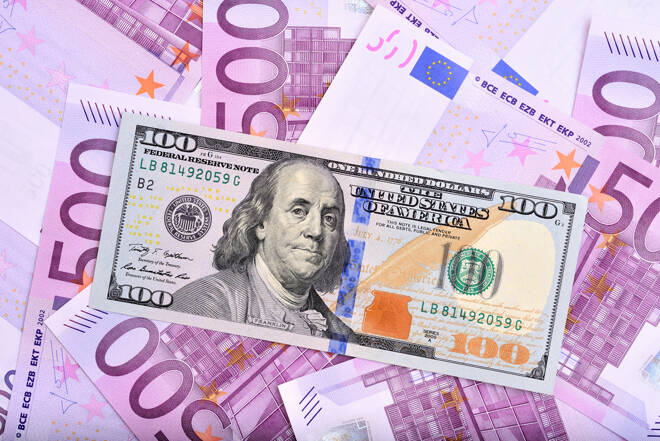Advertisement
Advertisement
German Retail Sales and April Manufacturing PMIs Give the EUR a Boost
By:
Economic data from the Eurozone gives the EUR an early boost. The focus will now shift to manufacturing data from the U.S and FED Chair Powell.
It was a busy day on the economic calendar on Monday. Manufacturing PMI figures for Italy and Spain were in focus along with finalized PMIs for France, Germany, and the Eurozone. German retail sales also drew attention ahead of the European open.
German Retail Sales
In March, retail sales jumped by 7.7% month-on-month, following an upwardly revised 2.7% increase in February.
According to Destatis,
- Compared to the pre-crisis month of February 2020, retail sales were up by 4.4%.
- Year-on-year, retail sales was up by 11.0%, which was the strongest year-on-year increase since records began back in 1994.
Member State Manufacturing PMIs
Spain’s Manufacturing PMI rose from 56.9 to 57.7 in April, with Italy’s Manufacturing PMI increasing from 59.8 to 60.7. Economists had forecast PMIs of 59.0 and 61.0 respectively.
From France, the Manufacturing PMI declined from 59.3 to 58.9, which was down from a prelim 59.2.
Germany’s Manufacturing PMI fell from 66.6 to 66.2 which was down from a prelim 66.4.
The Eurozone
The Manufacturing PMI rose from 62.5 to 62.9 in April. This was down from a prelim 63.3, however.
According to the Markit Survey,
- Operating conditions improved at a rate that surpassed March’s survey record.
- Growth was broad-based, with both the investment and intermediate goods categories registering considerable gains.
- Importantly, manufacturers of investment goods recorded the most marked improvement on record.
- Consumer goods also saw a marked improvement in operating conditions, while lagging the two other categories.
- The Netherlands led the way, posting a record high PMI followed by Germany.
- Growth rates for both output and new orders remained closed to March’s survey records.
- Firms reported rising market confidence, with new orders rising sharply as a result of signs that both manufacturers and clients are anticipating a sharp increase in activity in the coming months.
- New export orders also rose at a considerable pace in April.
- Product growth was limited, however, due to some degree of capacity constraints.
- As a result of product shortages, input prices rose at the 2nd fastest rate on record.
- Firms raised their own charges to the strongest degree in over 18-years of available data.
- Manufacturers increased payrolls for the third consecutive month and by the largest number since Feb-2018.
- According to the latest data, manufacturers were at their most optimistic in nearly 9-years.
Market Impact
Through the release of the German retail sales figures earlier in the day, the EUR fell to a post-stat low and a current day low $1.20131before finding support.
Driven by impressive manufacturing PMI numbers and a sharp rise in German consumer spending, the EUR rallied to a post-stat and current day high $1.20557.
At the time of writing, the EUR was up by 0.30% to $1.20549.
Next Up
ISM Manufacturing PMI and finalized Markit Manufacturing PMI numbers for April. After the European close, FED Chair Powell will also draw attention.
About the Author
Bob Masonauthor
With over 28 years of experience in the financial industry, Bob has worked with various global rating agencies and multinational banks. Currently he is covering currencies, commodities, alternative asset classes and global equities, focusing mostly on European and Asian markets.
Advertisement
